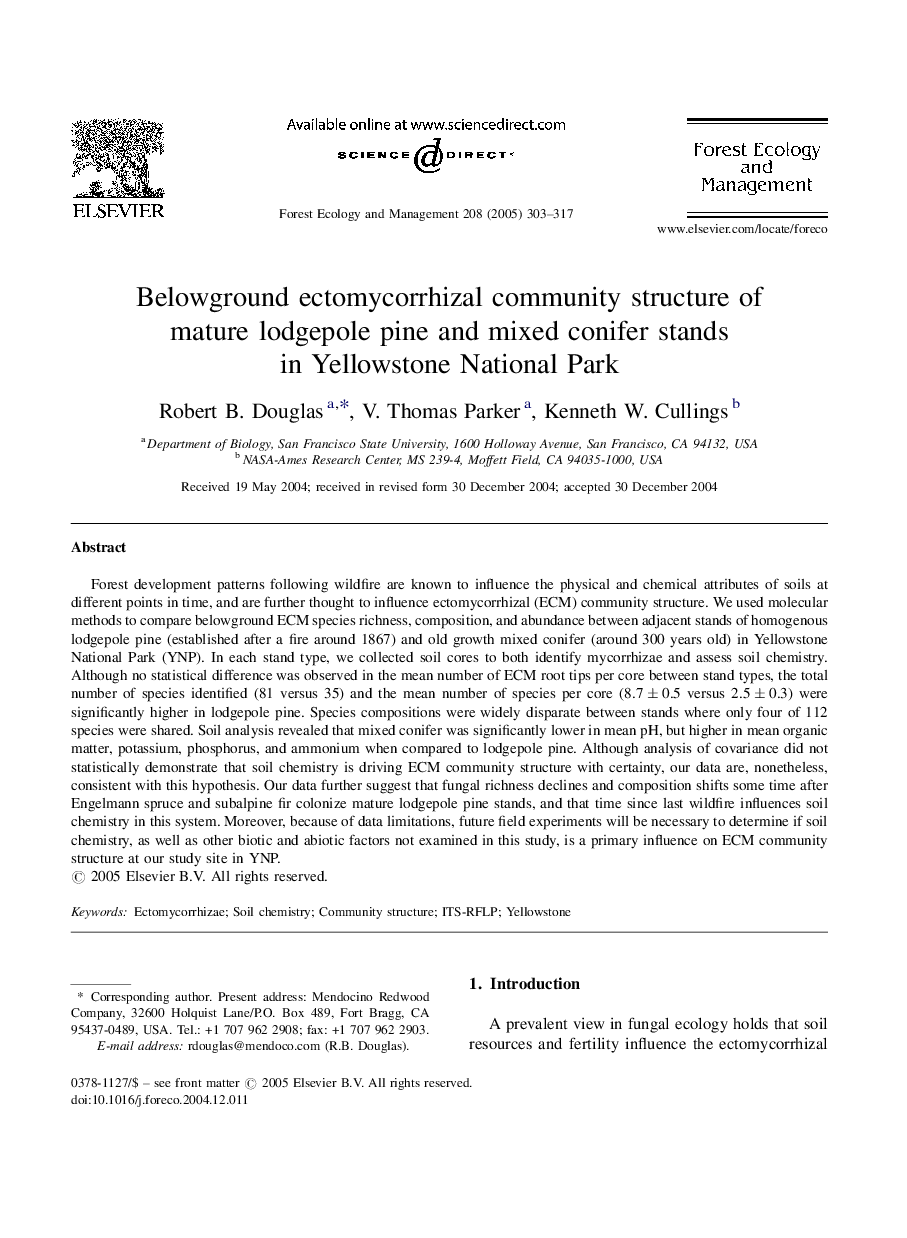| کد مقاله | کد نشریه | سال انتشار | مقاله انگلیسی | نسخه تمام متن |
|---|---|---|---|---|
| 9620424 | 159409 | 2005 | 15 صفحه PDF | دانلود رایگان |
عنوان انگلیسی مقاله ISI
Belowground ectomycorrhizal community structure of mature lodgepole pine and mixed conifer stands in Yellowstone National Park
دانلود مقاله + سفارش ترجمه
دانلود مقاله ISI انگلیسی
رایگان برای ایرانیان
کلمات کلیدی
موضوعات مرتبط
علوم زیستی و بیوفناوری
علوم کشاورزی و بیولوژیک
بوم شناسی، تکامل، رفتار و سامانه شناسی
پیش نمایش صفحه اول مقاله

چکیده انگلیسی
Forest development patterns following wildfire are known to influence the physical and chemical attributes of soils at different points in time, and are further thought to influence ectomycorrhizal (ECM) community structure. We used molecular methods to compare belowground ECM species richness, composition, and abundance between adjacent stands of homogenous lodgepole pine (established after a fire around 1867) and old growth mixed conifer (around 300 years old) in Yellowstone National Park (YNP). In each stand type, we collected soil cores to both identify mycorrhizae and assess soil chemistry. Although no statistical difference was observed in the mean number of ECM root tips per core between stand types, the total number of species identified (81 versus 35) and the mean number of species per core (8.7 ± 0.5 versus 2.5 ± 0.3) were significantly higher in lodgepole pine. Species compositions were widely disparate between stands where only four of 112 species were shared. Soil analysis revealed that mixed conifer was significantly lower in mean pH, but higher in mean organic matter, potassium, phosphorus, and ammonium when compared to lodgepole pine. Although analysis of covariance did not statistically demonstrate that soil chemistry is driving ECM community structure with certainty, our data are, nonetheless, consistent with this hypothesis. Our data further suggest that fungal richness declines and composition shifts some time after Engelmann spruce and subalpine fir colonize mature lodgepole pine stands, and that time since last wildfire influences soil chemistry in this system. Moreover, because of data limitations, future field experiments will be necessary to determine if soil chemistry, as well as other biotic and abiotic factors not examined in this study, is a primary influence on ECM community structure at our study site in YNP.
ناشر
Database: Elsevier - ScienceDirect (ساینس دایرکت)
Journal: Forest Ecology and Management - Volume 208, Issues 1â3, 5 April 2005, Pages 303-317
Journal: Forest Ecology and Management - Volume 208, Issues 1â3, 5 April 2005, Pages 303-317
نویسندگان
Robert B. Douglas, V. Thomas Parker, Kenneth W. Cullings,